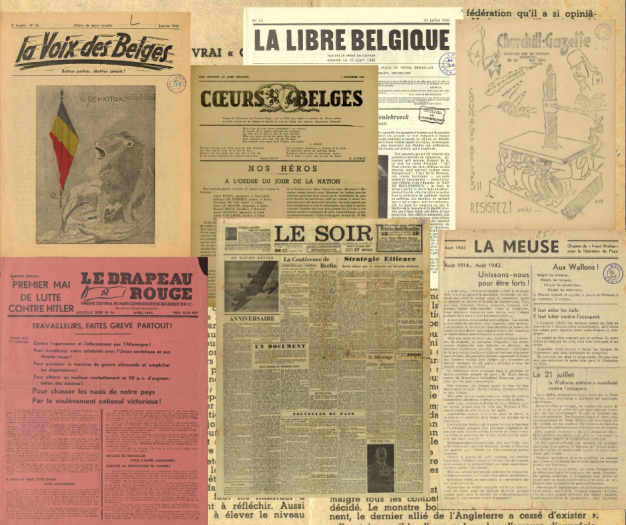Resistance fighters in the underground press on the online platform Resistance in Belgium!

On 21 October 2024, CegeSoma/State Archives launched Resistance in Belgium, the national database on the Resistance in Belgium. This new tool now allows everyone to consult online data on the thousands of people involved in Resistance activities during World War II, in Belgium and, sometimes, in neighboring countries such as France.
What's new?
Thanks to the sustained efforts of an ever-growing team of volunteers and CegeSoma staff members, the Resistance in Belgium platform has just reached a new milestone. Already containing more than 42,000 biographical files on resistance fighters linked to the Belgian intelligence and action services, it has been expanded with nearly 23,000 new biographical files on people who applied for the status of resistance fighter in the underground press. This means that nearly 65,000 biographical files on resistance fighters are now available on the online platform!
Ultimately, the database should contain information on more than 200,000 people, from more than 350,000 individual files.
What does “resistance in the underground press” mean?
Starting in the summer of 1940, men and women began producing and distributing periodicals that escaped censorship. There were about 675 of these publications, only about 20 of which were still in circulation at the end of the occupation. This underground press, which represented a variety of political tendencies, was one of the first forms of resistance against the occupiers in Belgium. Some of these publications were very sporadic and had a limited circulation, while others had a wide reach, especially in French-speaking Belgium. The underground press had many objectives: to boost the morale of the population, to counterbalance German propaganda, to encourage active resistance, etc. Of the tens of thousands of people who participated in this movement, at least 1,650 died as a result of Nazi repression.
To find out more:
What 's on the new files of resistance fighters in the underground press?
Along with a detailed ID card for each person, there are the names of the movements and/or networks they belonged to, the national recognition status they applied for and maybe got, and if they faced repression, info about it.
The files on those who obtained the status of resistance fighter in the underground press (more than 12,000 cases) also contain information on the underground newspapers in which they participated as distributors, editors, directors, and/or printers. A link to the presentation of these newspapers, to their digitized content (https://warpress.cegesoma.be/en), and to the files from which the files originate completes the information.
Want to explore the platform?
It couldn't be easier: just go to https://resistanceinbelgium.be. You can perform a simple search by name or place of residence, or a more complex search using SPARQL queries, which allow you to cross-reference hundreds of thousands of pieces of information according to various criteria.
For example, the online platform allows you to determine that 83.3% of people who applied for recognition through the underground press were men and 16.7% were women. Just under half of them were granted this status. As a result of their resistance activities, 23% of women and 30% of men were sentenced to prison.
The platform is very well documented and includes a Frequently Asked Questions (FAQ) section, which guides users step by step through their research and answers questions about the nature of the files and data available.
Would you like to consult or reproduce one or more files?
For files on underground press status: contact the Archives Service for War Victims (aos_avg@arch.be)
For files from the National Union of the Clandestine Press and the Independence Front: contact CegeSoma (cegesoma@arch.be)
Specific questions about a particular file?
Feel free to send an email to CegeSoma (cegesoma@arch.be)
Access to the platform: https://resistanceinbelgium.be